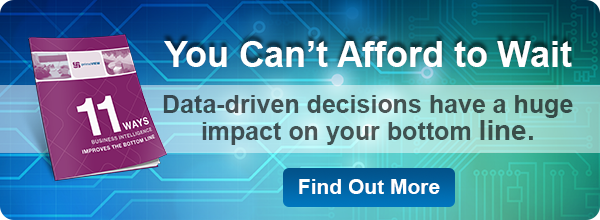 Nationwide, Business Intelligence is increasingly integrated in the day-to-day management of long term post-acute care (LTPAC) facilities. As we have posted in previous blogs, decision makers at the corporate, region, facility, and department levels have adapted to the features and seized the resultant benefits that BI has to offer. Examining the observable trends in LTPAC and some of our own research may be compelling. Here are three of the more obvious trends:
Nationwide, Business Intelligence is increasingly integrated in the day-to-day management of long term post-acute care (LTPAC) facilities. As we have posted in previous blogs, decision makers at the corporate, region, facility, and department levels have adapted to the features and seized the resultant benefits that BI has to offer. Examining the observable trends in LTPAC and some of our own research may be compelling. Here are three of the more obvious trends:
- Self-service analytics – What drives self-service is the unsatisfactory reliance on the IT-generated “report factory” which can be slow, often dispensing outdated information. This model of information gathering and distribution places an unnecessary burden on the IT department. However, BI, designed with input from users, is responsive and current. BI gives the users the flexibility and the knowledge to effectively make decisions with up-to-date information right at their fingertips. With data transparency, they have the capacity to drill down to greater details enabling them to ask and answer their own questions.
- The gap between governance and self-service analytics is narrowing - In our experience and research, decision makers can get access to the data they need without having to go through someone else, such as the IT department, to deliver the information. This results in a reduction in the gap between technology and management. Let IT do what it does best, gather and store data securely. And let management retrieve the information through BI which automates data retrieval across disparate applications to generate user-friendly views with drill-down capabilities and custom-designed reports
- BI for everyone - BI has become the decision-enabling and planning tool for any manager, department head, or leader. If users have decision-making authority, they can access relevant, timely, and actionable information. We have observed over the eight-plus years we have offered a BI solution, that BI satisfies the growing hunger for a broader menu of digestible information to fuel savings, compliance, and growth at the department, facility, region, and corporate levels.
One of BI’s benefits is that it helps decision makers discover new questions – a world of analytics of which they may not have been aware. Sometimes it takes more questions and answers to generate more questions and answers to discover, decide, and succeed. And that’s good. For the more precise the probing, potential problems emerge before they get out of hand and new opportunities are discovered before they get away. One COO mentioned recently that primeVIEW (PCT’s BI dashboard solution) has alerted his team to problems they had not before discovered when their only source of information was the “reporting factory”.
Because primeVIEW is customer driven, we have watched this desire for more in-depth information with keen interest and responded quickly with new views and reports. Often customers will request a new and expanded, or more in-depth, view of a particular KPI or set of KPIs, such as census, admissions, discharges, and readmissions to hospitals, among others. This access to more information has a direct impact on efficiencies, cash flow, and the bottom line.
These are the top three trends we have observed and responded to, developing the primeVIEW platform further as the self-analytics source, to narrow the gap between governance and what IT departments deliver – a tool for all decision makers. As LTPAC moves into the new world of care and reimbursement models, they can be confident they will be able to get the right answers to the right questions through BI.
/Prime-Care-Technologies-Logo.png?width=191&height=55&name=Prime-Care-Technologies-Logo.png)

 A revisit to the world of data mining
A revisit to the world of data mining